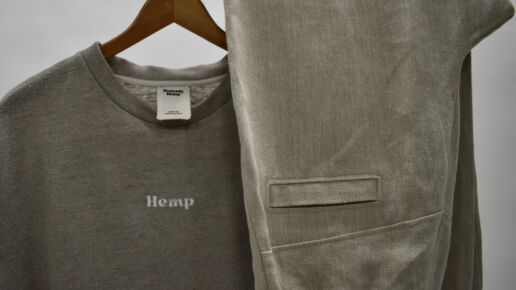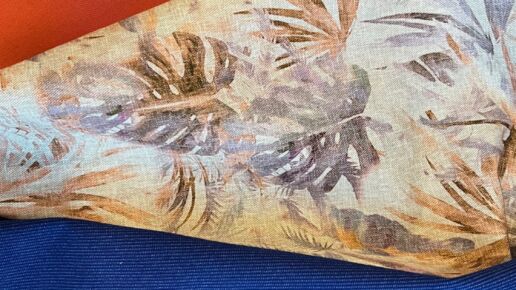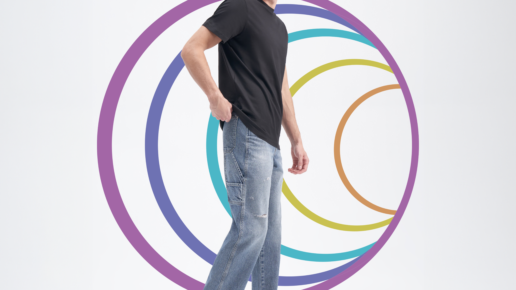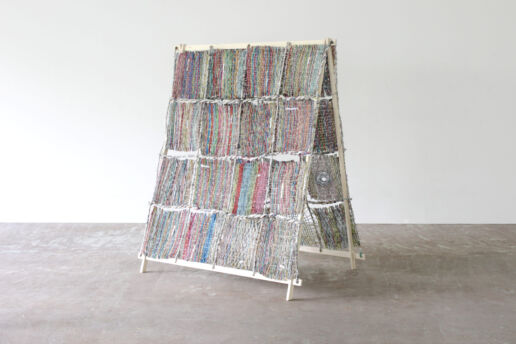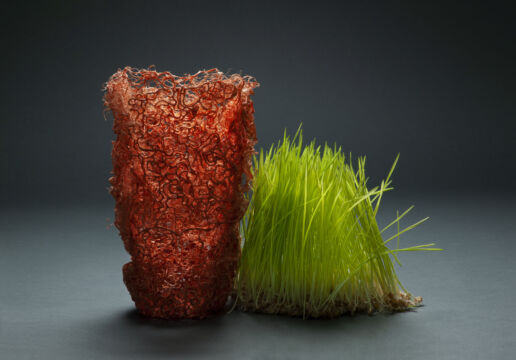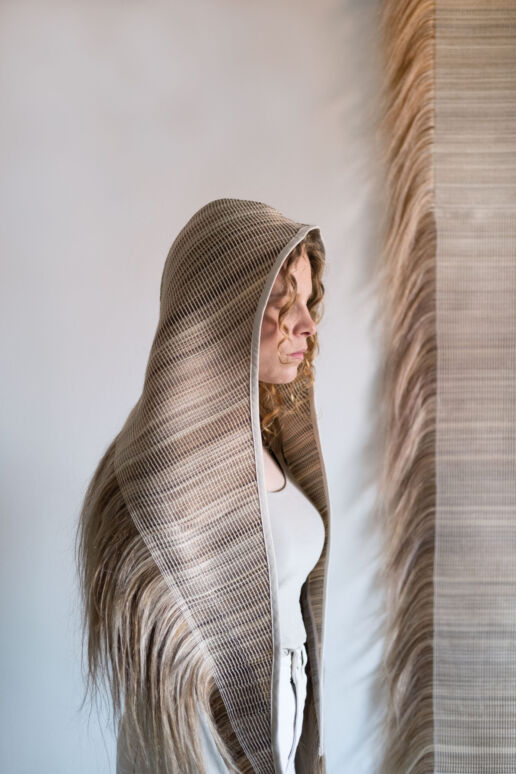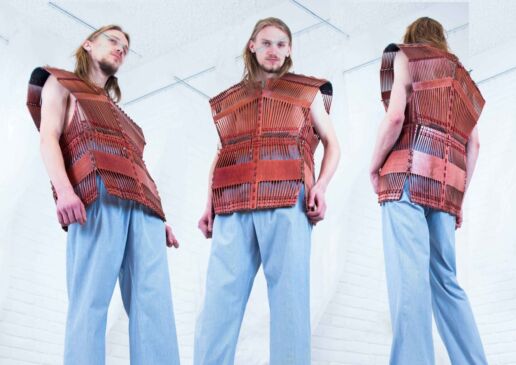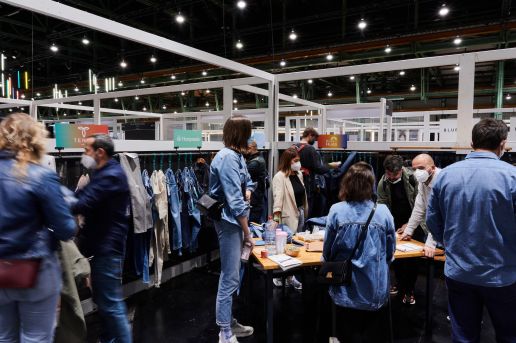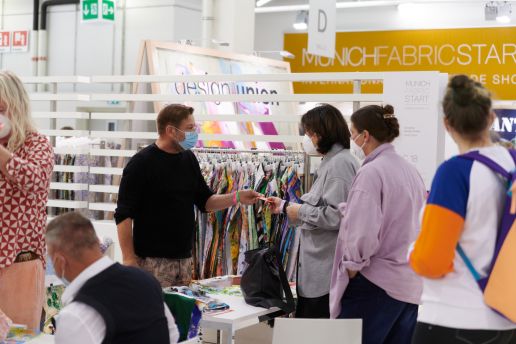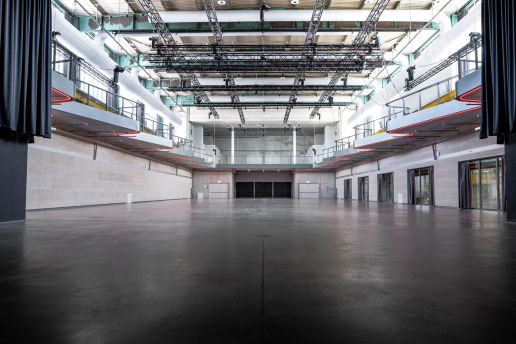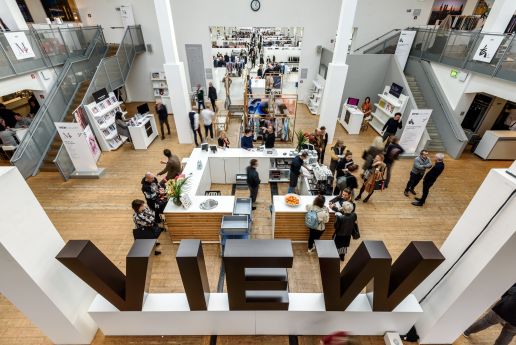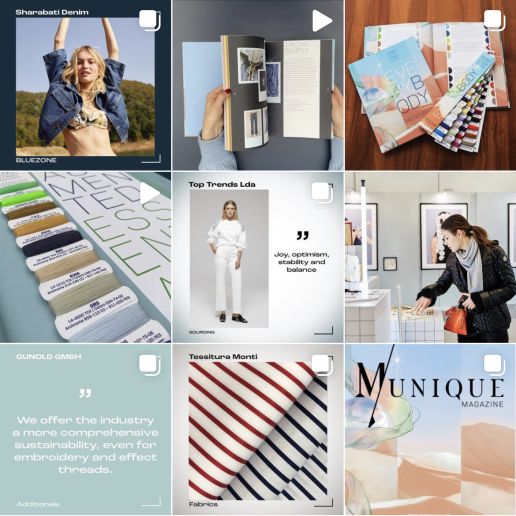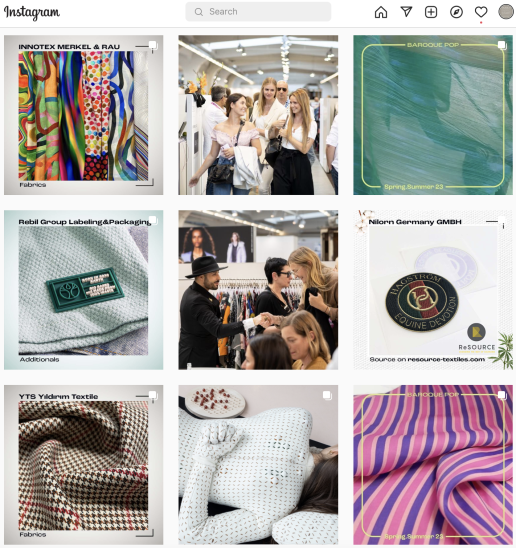Fashion
The New World of Colours - Sustainable innovations
THE NEW WORLD OF colours
MycoColors by Birke Weber and Friederike Hoberg
SUSTAINABLE INNOVATIONS
Dyes play a major role in our daily lives – in the clothes we wear, the cosmetics we use or the food we eat. Most of the dyes we use are of synthetic origin, which poses potential health risks – both in the manufacturing process and in the dyeing process or use. In addition, dyes and pigments in industrial wastewater are not infrequently released into the environment, where they remain and damage ecosystems.
MycoColors, a project by designer Birke Weber and biochemist Friederike Hoberg, addresses precisely this problem. The two are researching the potential of alternative dyes – specifically: from fungi. With MycoColors, they want to develop optimal growth conditions for colour-producing mycelium with the aim of creating a sustainable extraction of dyes and an innovative dyeing process and establishing fungal dyes in the textile and fashion industry. Because: fungi offer a lively, broad colour spectrum that runs through all the colours of the rainbow and is far from being exhausted
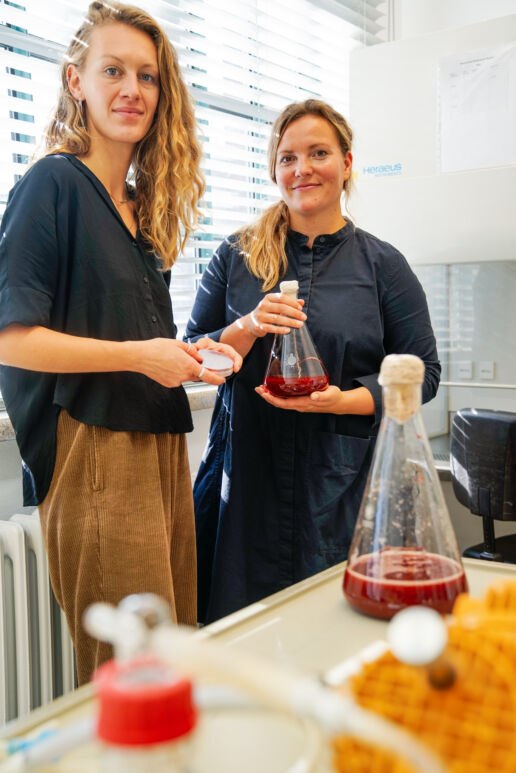

The advantages: The fungal mycelium from which the dyes are extracted grows within just a few days, cultivation takes place in inexpensive culture mediums and production is independent of weather and season. Furthermore, MycoColors works in a closed material cycle: resources such as water and nutrients can be recovered and reused, and by-products such as the biodegradable mycelium can either be returned to nature or upcycled – for example, by using it for paper production.
“The textile and fashion industry uses vast quantities of toxic and carcinogenic chemicals, including synthetic dyes, for its ever-changing
product range. But the end customers cannot trace everything that is hidden in a purchased T-shirt or carpet. A humane and environmentally
friendly alternative made from fungi aims to revise this uncertainty, especially with regard to the colors in a purchased product.”
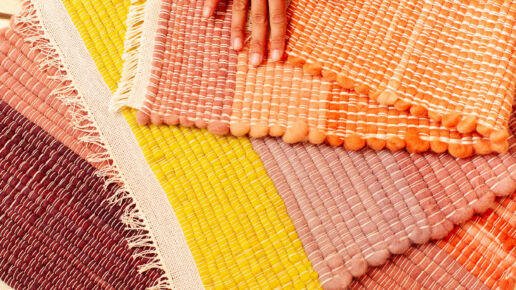
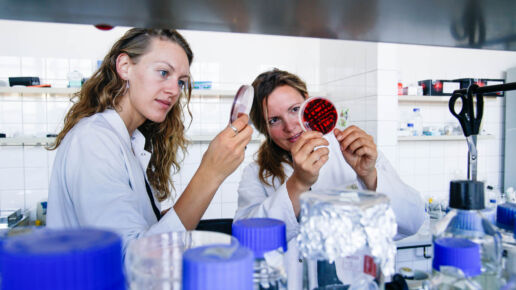
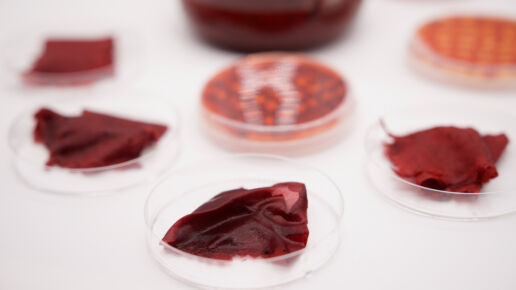
———————————————————————–
THIS MIGHT BE ALSO INTERESTING FOR YOU
Honestly Hemp – Sustainable Innovations
11. April 2024
Her vision: to create an entire outfit made wholly from hemp fibre and end the stigma surrounding the plant.
Fabric Trends Spring.Summer 25 – Part V
9. April 2024
At the heart of this collection is Q-Cycle by Fulgar™, a revolutionary approach that incorporates end-of-life tires into the mass balance technology used during its production, minimizing waste and giving a new life to materials that would contribute to environmental challenges.
BLUEZONE Signature Spring.Summer 25 – Part II
4. April 2024
The designer has given free rein to his creativity to develop his vision of high quality, making increased use of ISKO's Ctrl+Z material science.
Collective braiding - Sustainable innovations
A world where everything is becoming faster, more connected and more digital, endless possibilities are emerging. But why always strive for the new instead of continuing the traditional?
Designer Camille Champion has taken note of this development and, during a stay in South Korea, set out to revive interest in traditional craftsmanship.
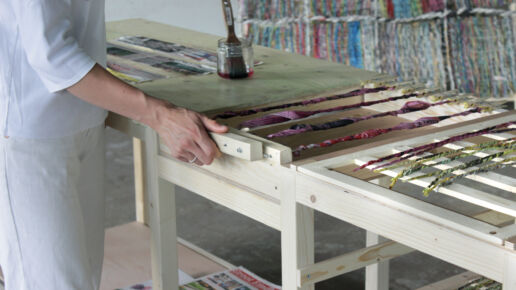
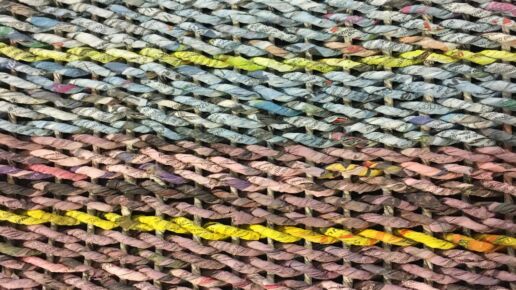
During her travels, she discovered the over 500-year-old technique of jiseung – a process dating back to the Joseon Dynasty that is used to make basketry from old books and paper waste. To do this, the paper is cut into thin strips and then corded. The cords can then be woven into containers such as baskets in various colours and patterns using different basketry techniques.
To save this cultural heritage from extinction, Camille Champion has launched the “Twist and Roll” project, bringing the reuse of newspaper waste to create new objects into a modern Western context: to pass on the craft, the designer has set up a series of workshops to give school children a connection to this tradition. She has designed a small weaving tutorial to teach children to make their own paper threads, weave them on a loom and then collectively build a tent-like structure for their classroom. Twist and Roll combines sustainability, creativity, craft skills and teamwork to show how the education system can benefit from crafts.
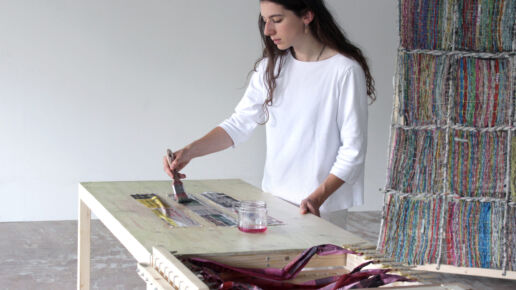
“In my opinion, giving the right tools to the new generations is very important.
Teaching them about materiality, history, or sustainability, will allow them to make the right choices for a better future.”
———————————————————————–
THIS MIGTH BE ALSO INTERESTING FOR YOU
Honestly Hemp – Sustainable Innovations
11. April 2024
Her vision: to create an entire outfit made wholly from hemp fibre and end the stigma surrounding the plant.
Fabric Trends Spring.Summer 25 – Part V
9. April 2024
At the heart of this collection is Q-Cycle by Fulgar™, a revolutionary approach that incorporates end-of-life tires into the mass balance technology used during its production, minimizing waste and giving a new life to materials that would contribute to environmental challenges.
BLUEZONE Signature Spring.Summer 25 – Part II
4. April 2024
The designer has given free rein to his creativity to develop his vision of high quality, making increased use of ISKO's Ctrl+Z material science.
Clothes that grow - Sustainable innovations
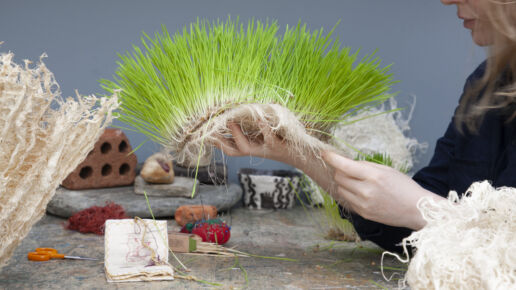
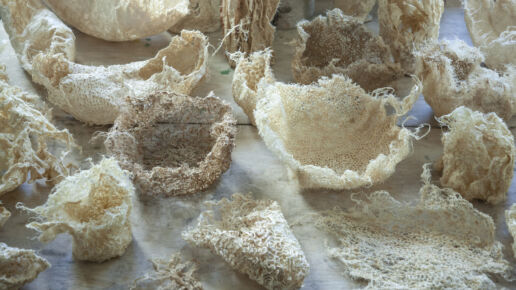
Nature as a 3D printer: material designer and underwater photographer Zena Holloway creates shapes and forms from wheat grass roots that grow in self-carved moulds made of beeswax. The supposed magic lasts for twelve days – the roots spread out horizontally or vertically and make their individual way through the wax templates. Depending on the shape of these, the roots either grow small in a confined space so that they become flat and compact, or if there is more space they can root deeper and three-dimensional shapes emerge. Immediately after harvesting, the roots are heavy and moist, after 24 hours they dry out and become light as a feather.
Each growth cycle produces a different result – all products are therefore individual pieces that can be further shaped by cutting, sewing, tearing or linking. For example, they can be used to create large, hanging structures, to shape vessels or to produce clothing and accessories. The wheatgrass roots also react particularly well to natural dyeing processes. In the name of sustainability: the water that accumulates and runs off during production can be reused and the leftover shoots, seeds or roots can be reused as animal feed. In addition, the dried root is a kind of botanical skeleton that binds carbon. Thus, the Rootful project demonstrates a micro-level approach to solving the complex problem of climate change.
“Growing artefacts from root is the simplest concept but captures the imagination of a wide audience.
I’m learning that root is a wonderful material to create fashion and art, serving to open up conversations around materiality and sustainability that inspire change.“
In the name of sustainability: the water that accumulates and runs off during production can be reused and the leftover shoots, seeds or roots can be reused as animal feed. In addition, the dried root is a kind of botanical skeleton that binds carbon.
Thus, the Rootful project demonstrates a micro-level approach to solving the complex problem of climate change.
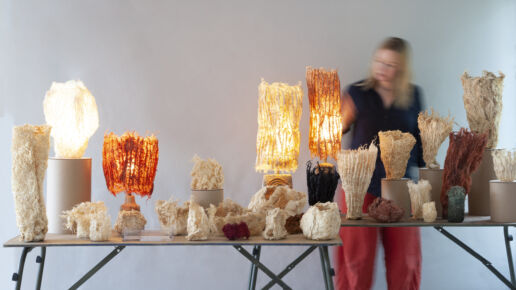
———————————————————————–
THAT MIGHT BE ALSO INTERESTING FOR YOU
Honestly Hemp – Sustainable Innovations
11. April 2024
Her vision: to create an entire outfit made wholly from hemp fibre and end the stigma surrounding the plant.
Fabric Trends Spring.Summer 25 – Part V
9. April 2024
At the heart of this collection is Q-Cycle by Fulgar™, a revolutionary approach that incorporates end-of-life tires into the mass balance technology used during its production, minimizing waste and giving a new life to materials that would contribute to environmental challenges.
BLUEZONE Signature Spring.Summer 25 – Part II
4. April 2024
The designer has given free rein to his creativity to develop his vision of high quality, making increased use of ISKO's Ctrl+Z material science.
Hairy affair - Sustainable Innovation
Hair creates identity – we dye it, style it, create new looks and expressions, and associate ourselves with cultural or social groups. It loses meaning and becomes rubbish to be discarded. In her hair project, Savine School gives hair a second life.
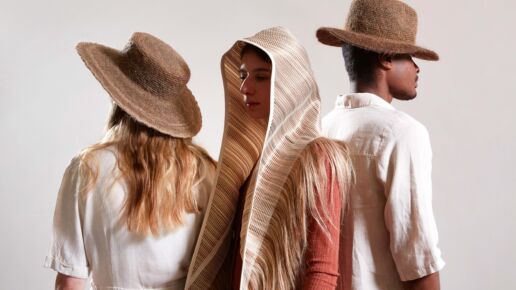
“Haar Haar focuses on the short switch from appreciating hair to feeling disgusted by it, even when it is the same material. It seeks to give a second life
to the material we treasured when it was on our head.“
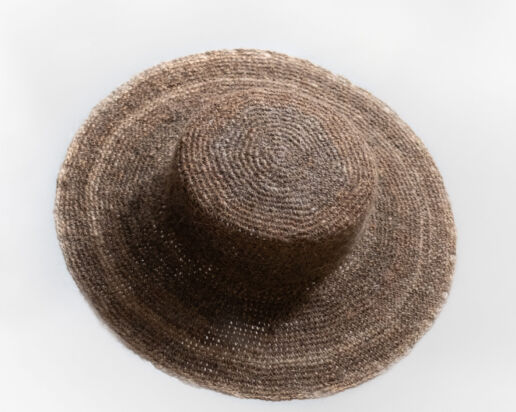
Every month, the textile designer and material researcher collects kilos of hair from various hair salons and extension studios and sorts them by colour and length. In the next step, she uses a machine to spin the hair together with wool into a uniform, flexible yarn. This yarn highlights the properties of both materials: the admixed wool offers the possibility to work with other tones beyond the hair colours, while the reflection of light on the hair provides a beautiful shimmer.
The designer uses the yarn to produce stylish accessories, such as crocheted hats – which at first glance have nothing to do with what ends up on the floor during a visit to the hairdresser. In this way, Savine Schoorl makes it clear that hair is a valuable resource and gives people the opportunity to discover the value of supposed waste in its second life cycle.
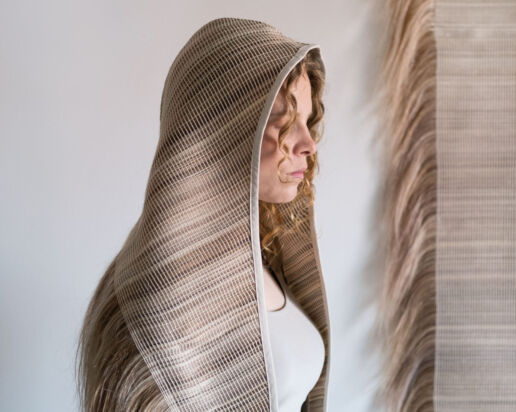
———————————————————————–
THIS MIGHT BE ALSO INTERESTING FOR YOU:
Honestly Hemp – Sustainable Innovations
11. April 2024
Her vision: to create an entire outfit made wholly from hemp fibre and end the stigma surrounding the plant.
Fabric Trends Spring.Summer 25 – Part V
9. April 2024
At the heart of this collection is Q-Cycle by Fulgar™, a revolutionary approach that incorporates end-of-life tires into the mass balance technology used during its production, minimizing waste and giving a new life to materials that would contribute to environmental challenges.
BLUEZONE Signature Spring.Summer 25 – Part II
4. April 2024
The designer has given free rein to his creativity to develop his vision of high quality, making increased use of ISKO's Ctrl+Z material science.
A Suit of Armour - Sustainable innovations
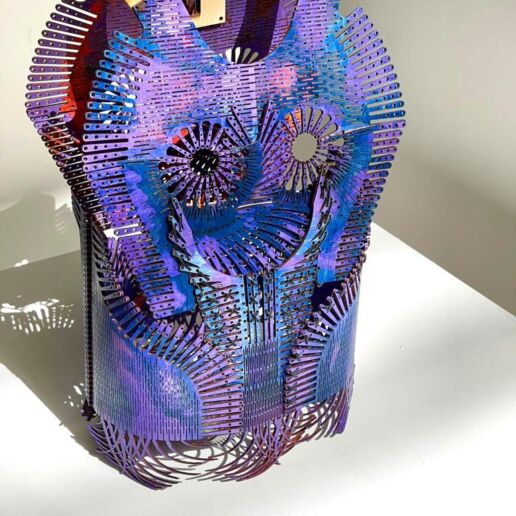
The name says it all: “Choub” means “wood” in Farsi – the material that designer Mehdi Mashayekhi draws on in his project Choub and uses innovative methods to create something new: Using digital fabrication, he has designed an abstract clothing collection for which he deconstructs the wood, giving the material new physical properties such as flexibility and stretchability.
The designer resorts to two methods: with topology optimisation, a computer-based process, he uses algorithmic models to determine the optimal shape of components in terms of load limits. The generative design method also creates new, powerful design options with the help of artificial intelligence. In this way, Mehdi Mashayekhi succeeds in solving complex requirements, distributing the weight of components and reducing manufacturing costs.
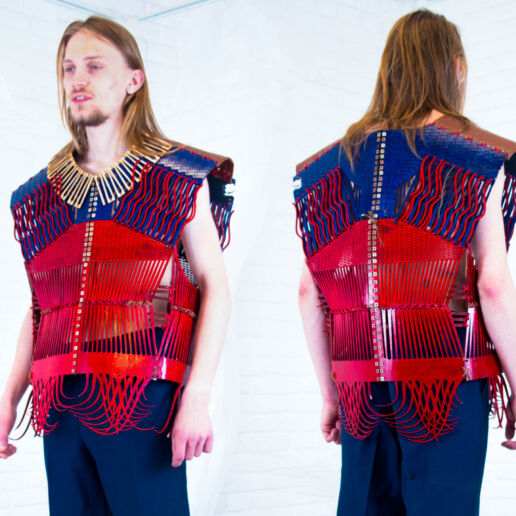
“Design is a glowing point in the cross-point between art and science, where reality meets vision.”
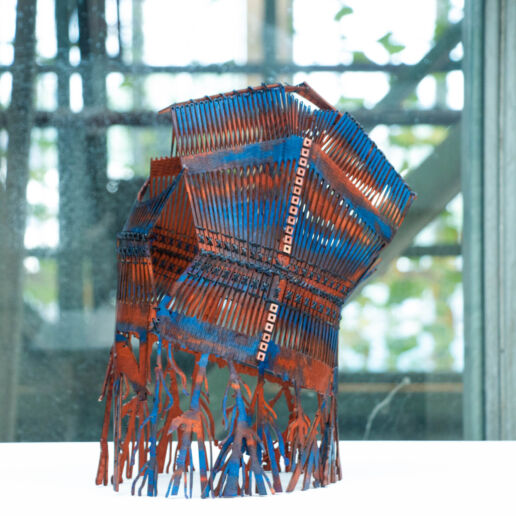
Innovative, unconventional, visionary: In the Choub project, 6mm thick plywood is used to create armour-like, portable constructions in which the wood loses its hardness and becomes flexible. Win-win: The designer optimises the use of materials in the design and at the same time provides a solution for upcycling waste. With the use of digital manufacturing, Mehdi Mashayekhi is helping to drive circularity and strengthen openness to materials and technical textiles.
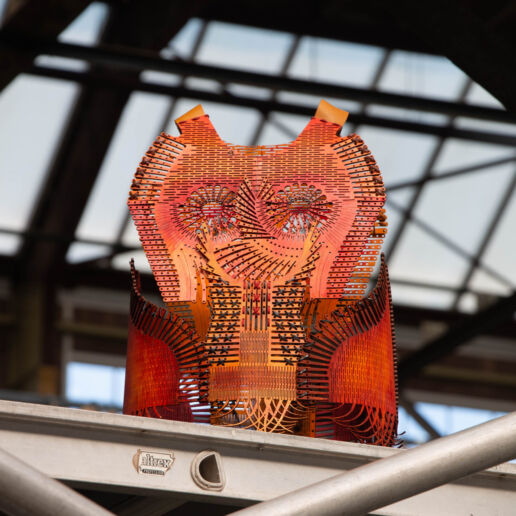
———————————————————————–
THIS MIGHT BE ALSO INTERESTING FOR YOU
Honestly Hemp – Sustainable Innovations
11. April 2024
Her vision: to create an entire outfit made wholly from hemp fibre and end the stigma surrounding the plant.
Fabric Trends Spring.Summer 25 – Part V
9. April 2024
At the heart of this collection is Q-Cycle by Fulgar™, a revolutionary approach that incorporates end-of-life tires into the mass balance technology used during its production, minimizing waste and giving a new life to materials that would contribute to environmental challenges.
BLUEZONE Signature Spring.Summer 25 – Part II
4. April 2024
The designer has given free rein to his creativity to develop his vision of high quality, making increased use of ISKO's Ctrl+Z material science.
The Material Revolution - Who is leading the charge?
In the past five years, groundbreaking science has been changing the clothing industry one experiment at a time. With a ravenous appetite for new fabrics, some great candidates have been castor bean-derived nylons, mushroom leather, and synthetic spider silks. Designed to correct some of the textile industry’s wrongs, new materials have been enticing the attention of some of the most prominent players in the fashion industry, which is an excellent thing.
Introducing Cutting Edge Atelier
As we enter a new material age, there has been an influx of fabric alternatives being researched and explored. So even though it may all seem pretty experimental right now, here are five companies making many of us believe that new materials will become the norm over traditional ones.
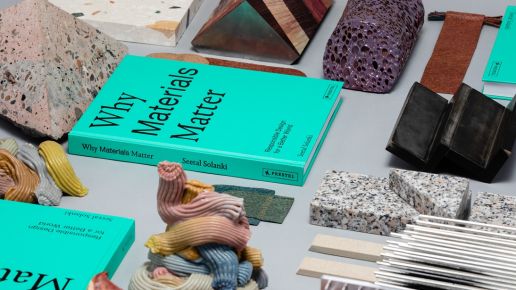
Picture credit:
Circular Systems
AlgiKnit
Is biology the future of fashion? Well, AlgiKnit seems to think so. The biomaterials company has been developing biomaterials that can play a vital role in the future of sustainable manufacturing.
By addressing the ecological damage caused by the fashion industry, AlgiKnit is making an impact by operating in a closed-loop product lifecycle that will bring sustainable bio-based textile alternatives to the footwear and apparel industries.
The biomaterials startup focuses on transforming the apparel ecosystem with rapidly renewable bio-based textiles. AlgiKnit has found a way of utilising materials with a significantly lower environmental footprint than conventional textiles. One of these materials is Kelp. Considered to be one of the fastest-growing organisms on earth – up to 10 times faster than bamboo. “Kelp is grown in aquatic farms around the world in coastal communities, often by fishermen and women, providing income during the fishing off-season,” states their site.
One of the benefits of Kelp, according to Fashion United is that it improves the environment by absorbing nutrients from agricultural and sewer run-off that can alter coastal settings. This recaptures nutrients for the next generation of biomaterials. Also, Algiknit’s biopolymer is entirely customisable.
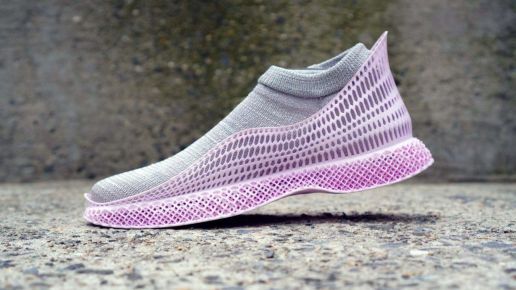
Picture credit: Algiknit

Picture credit: Algiknit
MyCoWorks
Founded by Philip Ross, Sophia Wang and Eddie Pavlu, the California startup MyCoWorks comprises a team of creative engineers, designers, and scientists. Their distinctive disciplines gave birth to a rapidly renewable natural resource called mycelium.
According to Insider.com, Mycelia are thread-like masses of fungi that grow underground. They run through almost every square inch of earth, delivering nutrients and allowing plants to “talk” to each other. MyCoWorks has innovatively used fungi to create a textile that performs like leather. On the mushroom-like material, Wang admitted to it being “a new thing in the world.”
So what does mycelium bring to the table? Well, MyCoWorks have presented mycelium as the solution to replace the resource-intensive product, leather. Relying on nature’s best tools, they have created a new kind of leather that can multiply from mycelium using a carbon-negative process. In addition, their custom-engineered material is sustainable, versatile, and animal-free. On MyCoWorks new leather, Dr Amanda Parkes, Chief Technology and Research at Manufacture NY, shared, “I believe we can solve all the world’s problems with mycelium biology”.
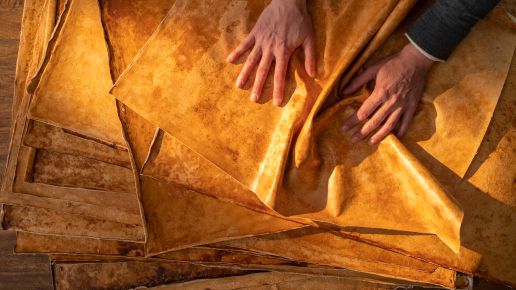
Picture credit: MyCoWorks
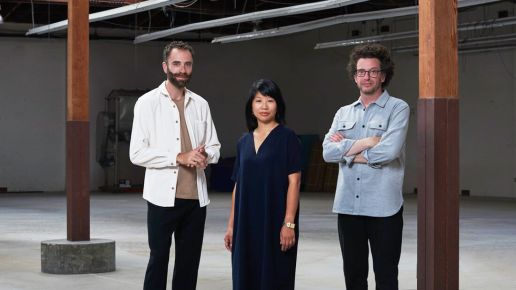
Picture credit: MyCoWorks
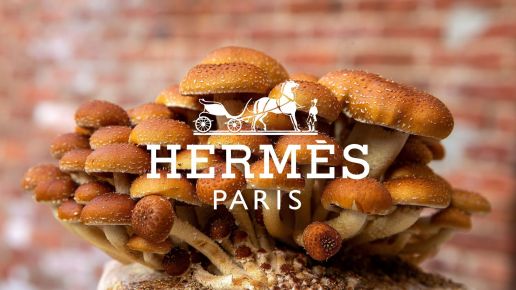
Picture credit: MyCoWorks
Desserto
Cactus vegan leather is nothing new. The material first came to our attention back in 2019. We wrote about how the two entrepreneurs, Adrián López Velarde and Marte Cázarez, developed and showcased their vegan leather material at the International Leather Fair Lineapelle 2019.
Made with cactus, the alternative to animal leather was heralded as a high resistance vegan cactus leather that would appeal to the fashion, interior and car industries.
Named Desserto, the cost-competitive material has been designed and developed to meet the most rigorous standards from the Aeronautic to the Fashion industries. That being said, not everyone has sung their praises. For example, Dr Ashley Holding and Paula Lorenz outed the Desserto material as partly vegan leather with cactus; the rest they described in a write-up was “undefined chemicals”. Although the founders have shared that the chemicals they use are non-toxic, it is not a truth revealed so openly by Desserto. Instead, the Mexican startup concentrated on the fact that their material was ‘PVC Free’ and did not contain a particular type of plastic.
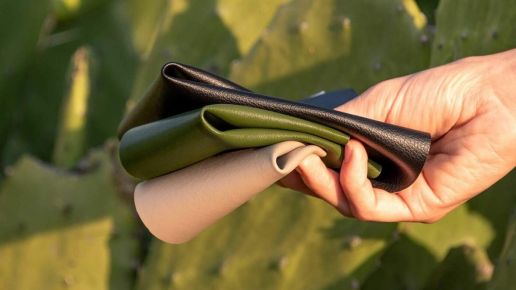
Picture credit: Desserto
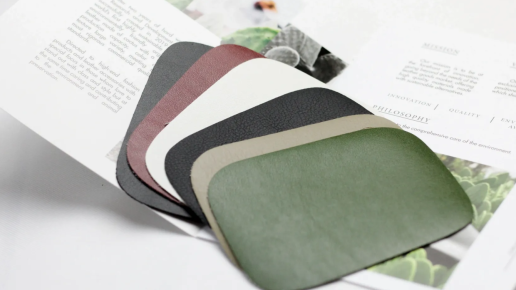
Picture credit: Desserto
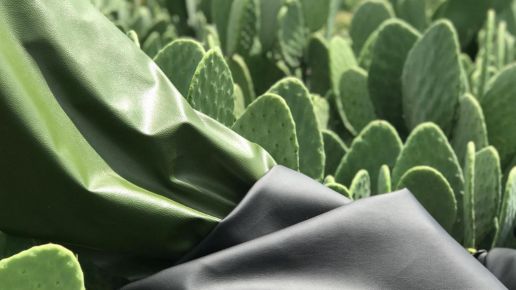
Picture credit: Desserto
Agraloop
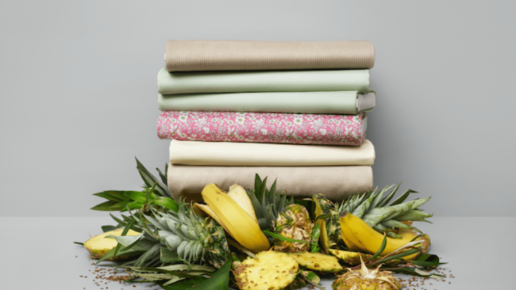
Picture credit: Agraloop
Agraloop has been busy transforming leftovers from food and medicine crops into scalable high-value natural fibre fashion products. The materials science company refines natural fibres from crops into a textile-grade fibre called Agraloop™ BioFibreTM.
“Our circular plus regenerative technologies provide systemic solutions for transforming waste into valuable fibre, yarn, and fabrics for the fashion industry,” states their website.
Mindfully sourced for circularity, Agraloop has developed a specialised wet processing technique; cellulose fibre from stems and leaves is purified into soft fibre bundles ready to spin into yarns. The Agraloop processes leftovers from various food and medicine crops, including oilseed hemp/flax, CBD hemp, banana, and pineapple.
Modern Meadow
Modern Meadow exists at the intersection of performance, scalable adoption and sustainability. The company began with an R&D initiative to develop a sustainable alternative to leather, which led to a breakthrough discovery of proteins as functional ingredients.
Harnessing the power of design, biology, and engineering, in 2017, Modern Meadow launched their prototype materials brand, ZOA. With the ability to impact a range of products across multiple industries, Modern Meadow state on their website: “Our experiments and exploration within ZOA led to the creation of Bio-Alloy™ and its application in a wide range of high-performing, low-waste bio fabricated materials, and our unique capabilities to create functional, animal-free proteins.”
Scaling by partnering with forward-thinking developers, manufacturers, and brands, Modern Meadow continues to educate industries on the possibilities of a biomaterial future.
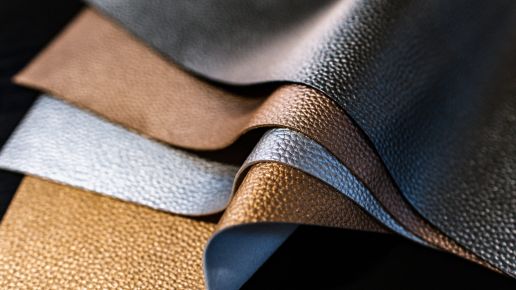
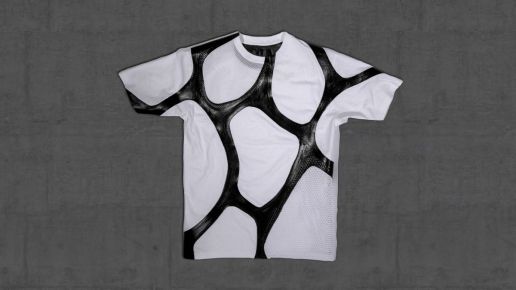
Picture credit:
Modern Meadow
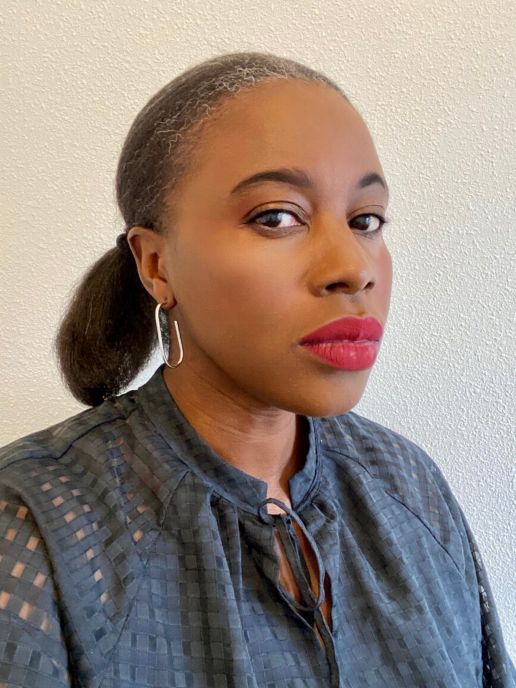
About the author
Founding editor-in-chief of FashNerd.com, Muchaneta has worked in the fashion industry for over 14 years. She is currently one of the leading influencers speaking and writing about the merger of fashion with technology and wearable technology.
Muchaneta ten Napel | editor@fashnerd.com
———————————————————————–
Discover further industry-disrupting innovations at our upcoming shows:
Advancements and Innovation: Who is Busy Solving a $4.6 Billion Problem?
A ubiquitous wardrobe staple, denim is one of the most prevalent fabrics of our time. Developed through the ages, those behind the widely used material are on a mission to transform the global apparel business into a cleaner, more ethical and more sustainable industry.
It is no secret that denim production is negatively impacting the environment.
Still, the good news is that more and more manufacturers, brands, retailers, and consumers are making an immense effort to undertake the issues related to the production of denim. Furthermore, driven by buzz words like ‘sustainability’ and ‘recycling’, many denim businesses are turning to new technologies to help them attain the most sustainable system possible.
When the denim industry becomes more sustainable, we need a new approach. The good news is that the technology has advanced to the point where we can make a big difference in reducing the environmental footprint of denim. Here are some great examples of some of the revolutionary approaches that have been introduced to the denim industry in the past few years.
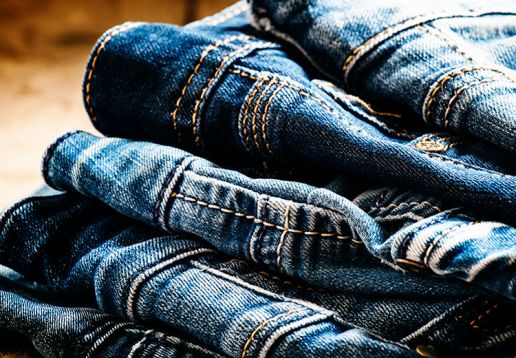
Picture credit: Ecotextile News
Smart Factory 4.0: Denim’s Greenest Ecosystem
Crescent Bahuman is taking the denim industry on a journey. Understanding the need for the industry to digitise, Zaki Saleemi, vice president of Crescent Bahuman, believes that one of the ways of doing this is through intelligent decisions supported by data.
Saleemi explained to Sourcing Journal that the intelligent factory is designed to give on-site managers real-time information on shop floor activity and other vital sustainability-related metrics like water measurements. The upgrade is a digitization plan that can help a denim company “get organised, get connected, get insights, and get optimised”.
Another exciting development is that Crescent Bahuman is also implementing the blockchain-enabled PaperTale, which shows the entire map of the supply chain – where the cotton came from, where it was manufactured, and where it got converted into fabric.
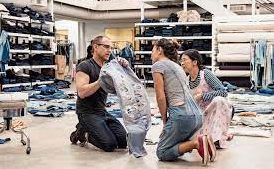
Picture credit: Levi
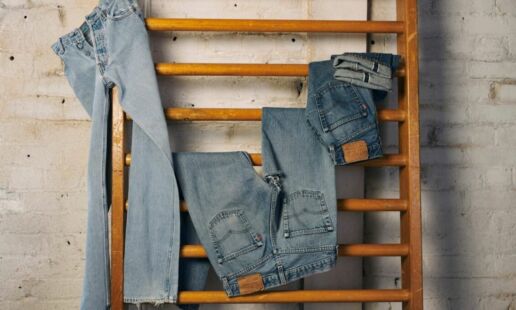
Picture credit: Levi Strauss
Levi’s Earth Conscious Robotic Technology
The majority of jeans are washed for hours to achieve that perfect blue colour, and the result is that the dyes end up polluting the groundwater. Looking back to a time when new innovation was leaving its mark on the denim industry, Levi came up with laser technology that made creating ripped and washed jeans easier and more efficient.
Looking to reduce the man-hours put in by designers trying to figure out the perfect fade and the time factory workers spend sandpapering the jeans, Levi’s is also determined to lessen the harsh chemicals that give jeans that much sought after faded look.
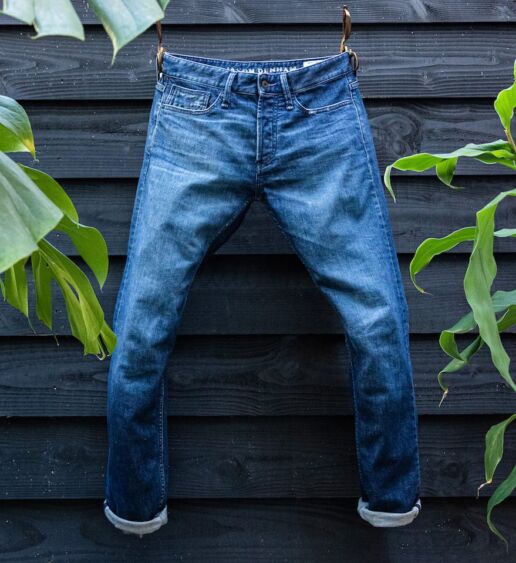
Picture credit: The Spin Off
Probing the use of Alternative Raw Materials
Exploring alternative raw materials such as hemp or orange pulp in textile production, Lenzing and denim manufacturer Candiani partnered to push the traditional boundaries of fibre production.
With similar environmental goals, Candiani’s biodegradable stretch denim made from Tencel Limited Edition yarns to the game contains 20% hemp fibre.
Again, Lenzing’s closed-loop manufacturing process has provided an excellent alternative to many classics – a new Tencel Limited Edition hemp soft fibre is an excellent alternative to many classics.
G-Star Raw: Pioneering New Means of Production
When it comes to sustainability, G-Star RAW is not only talking the talk; they are proving their commitment by continuously challenging the conventions of denim design.
Pioneering new means of production while maintaining an uncompromising dedication to quality and style, a few years ago, G-Star came up with a step-by-step process of how the Elwood RFTPi Jean came about. It was a process that pioneered a radical new dyeing method which is hydro and salt-free. They called the process Crystal Clear.
Considered to be the most radical change at the time when it comes to indigo dyeing process, the formula, even in its infancy, showed off its potential to play a part in saving the environment.
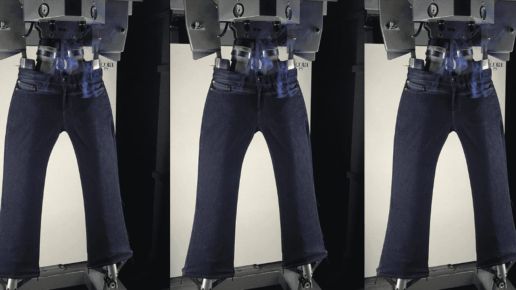
Picture credit: Fast Company
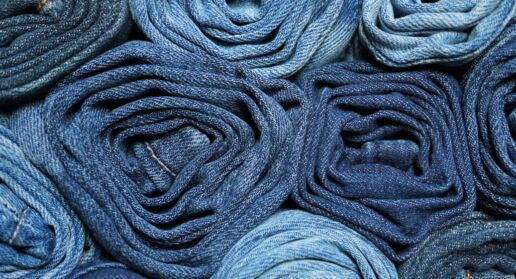
Picture credit: Science News for Students
Helping the Denim Industry Go Green
Combining economy and ecology, Sedo Engineering’s innovation is helping the denim industry go green. The Swiss innovation specialists have developed smart-INDIGO to help denim brands quickly move towards this sustainable production structure with more benefits at lower costs. Instead of toxic chemicals, Sedo Engineering uses only electricity and caustic soda to dissolve indigo dyes.
Giving out oxygen instead of toxic wastewater, smart-INDIGO reduces water use by 70 per cent, energy consumption by six times and carbon emission by ten times. The innovation is a “win-win solution for our clients”, says Werner Volkaert, managing director of Sedo Engineering.
With 17 smart-INDIGO machines operating worldwide, Sedo Engineering hopes to bring a revolutionary change to the denim industry.

About the author
Founding editor-in-chief of FashNerd.com, Muchaneta has worked in the fashion industry for over 14 years. She is currently one of the leading influencers speaking and writing about the merger of fashion with technology and wearable technology.
Muchaneta Ten Napel | editor@fashnerd.com
———————————————————————–
Don’t miss to explore more sustainable fabrics and trims
from international suppliers in our ReSOURCE area!
Also discover further industry-disrupting innovations at our upcoming shows in Munich this summer:
Recycling Textile Waste, Viable Solution or Short term plan?
With the rapid global increase in textile waste caused by the growth of the clothing and textile industry and fast fashion among consumers, textile recycling has become paramount.
The problem is that recycling textile is not an easy feat.
Many factors need to be considered. The most challenging obstacle to textile recycling is that the fabrics are often made from blended materials, and it is not easy to recycle mixed materials. This is mainly because each textile needs to be isolated before being effectively recycled. So as the fashion industry feels the pressure to move toward closed-loop production, what is the solution?
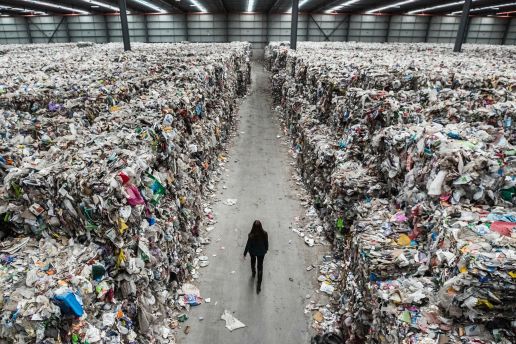
Picture credit: Rolling Stone
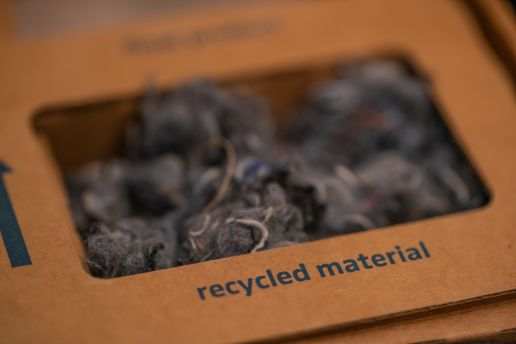
Picture credit: Pollima
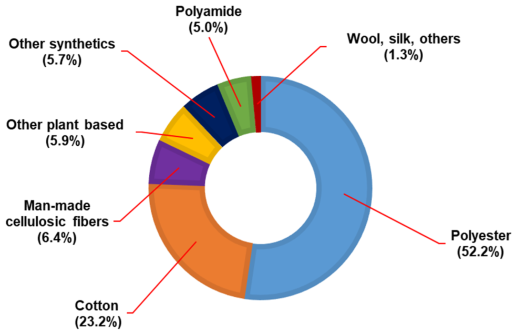
Picture credit: MDPI
Game-Changing Solutions Explained
Well, with various groundbreaking methods in the works, like the Hong Kong Research Institute of Textiles and Apparel (HKRITA), who came up with a solution that makes it possible to recycle blended material into new fabrics and yarns without any quality loss. They can do this thanks to a hydrothermal (chemical) process.
Working together with H&M Foundation, they successfully developed a process that can fully separate and recycle cotton and polyester blends. The recovered polyester material can be reused directly, creating new benefits of recycling without any quality loss. The hydrothermal process uses only heat, water and less than 5% biodegradable green chemical to self-separate cotton and polyester blends. This fibre-to-fibre recycling method is cost-effective, and there’s no secondary pollution to the environment, ensuring the life of the recycled material is prolonged sustainably. The technology will be licensed widely to provide broad market access and maximum impact.
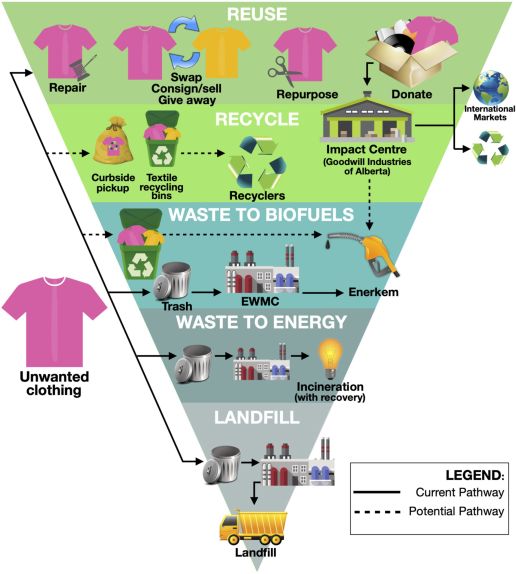
Picture credit: Sion Fraser University
Erik Bang, former Innovation Lead at H&M Foundation, shared:
“For too long, the fashion industry has not been able to recycle its products properly since there’s no commercially viable separation, sorting, and recycling technology available for the most popular materials such as cotton and polyester blends”. He continues, “This very encouraging finding has the potential to change that. We are very excited to develop this technology and scale it beyond the laboratory, which will benefit the global environment, people and communities.”
Then there is the Swedish company Södra. They have come up with a unique recycling solution that could influence how the fashion industry recycles its textiles.
Designed to enable large-scale textile recycling, the Södra, a significant forestry cooperative based in Växjö, Sweden, has come up with a unique solution that solves this fundamental obstacle to the textile industry. The pioneering solution makes it possible to recycle textiles on a large scale.
Using its resources and expertise for an innovative textile recycling solution, Södra has found a way to recycle fibres from blended fabrics on a large scale. They did this by enabling circular flows in the fashion and textile industry.
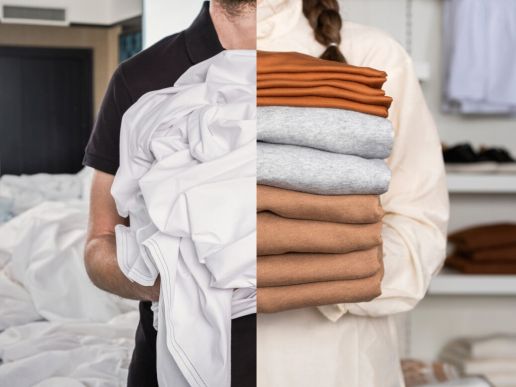
Picture credit: Södra
“Södra also has aggressive sustainability targets. We are, therefore, seeking companies with high sustainability ambitions that would like to partner with us in the delivery of textiles. That will determine our start-up and future production capacity” says Helena Claesson, Project Manager Södra.
Explaining the process further, Johannes Bogren, President of Södra Cell Bio-products, shared: “We are now redrawing the fashion and textile industry map by offering circular flows of textile fibres. A sweater can now become a sweater again. This will create added value for our customers, especially the fashion industry.”
The Fashion for Good Full Circle Textiles Project turned to innovative recycling technologies to close the loop on textile waste. The project’s objective was to explore the potential to reduce the environmental impact of textile waste; the textile-to-textile recycling solution has the potential to eliminate the industry’s dependence on virgin raw materials.
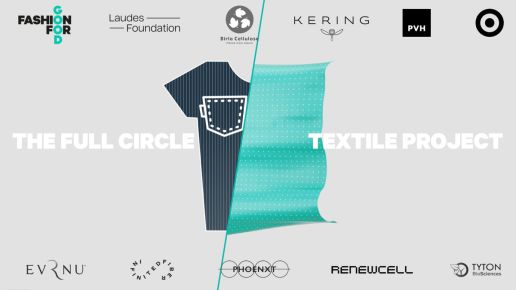
Picture credit: Fashion for Good
Supported by C&A, Martha Willis, Senior Manager of Sustainable Materials and Circular Innovation at C&A says: “This project will help us all in understanding the barriers, impacts and opportunities in the chemical recycling of polyester and is an important foundation to C&A’s commitment to connecting principles of circularity to 7 out of 10 of our products by 2028.”
Focusing on investigating economically viable and scalable solutions, the Full Circle Textiles Project has accomplished their objective scale of disruptive innovation in the industry and the capability of chemical recycling to accelerate circularity.
“The next phase of the project focuses on scaling these solutions and encourages brands, innovators, and supply chain partners to create long-term partnerships, catalyse funding to enable scaling, and leverage industry expertise to develop and implement these technologies further,” says Fashion For Good.
The C&A supported project, which was launched in September 2020, was successfully executed. Read the outcomes and learnings of the project here.
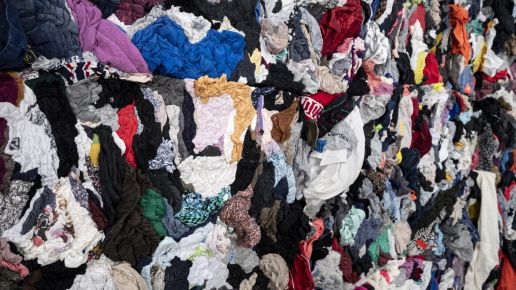
Picture credit: Nord News
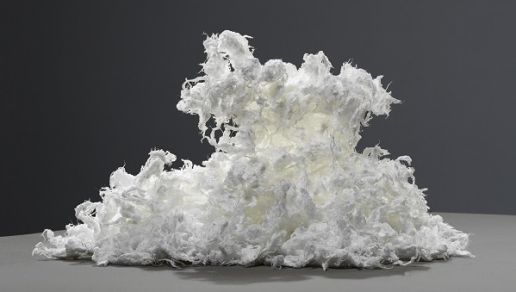
Picture credit: Eco Rebels
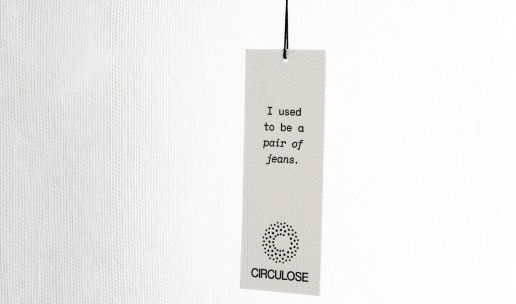
Picture credit: Nouryon
Conclusion
So is recycling textile waste a viable solution or short term plan?
I think that the aim should be to develop the infrastructure necessary to scale textile recycling, and to do this, fashion businesses need to take advantage of upcoming technological developments. By working together toward a common goal, we will get one step closer to a more sustainable textile recycling process, with the end goal of contributing to facilitating a circular economy.

About the author
Founding editor-in-chief of FashNerd.com, Muchaneta has worked in the fashion industry for over 14 years. She is currently one of the leading influencers speaking and writing about the merger of fashion with technology and wearable technology.
Muchaneta Kapfunde | editor@fashnerd.com
———————————————————————–
Discover further industry-disrupting innovations at our upcoming shows:
EVERY.BODY SS23 Trend #4 – Wild Wide World
Wild Wide World
The race to the metaverse
We are happy to present you the Spring.Summer 23 trend themes included in our MUNICH FABRIC START Trend Book. We hope the themes will give you the impression of what the next season will bring and that they will inspire you and spark new ideas for your future collections’ development.
WILD.WIDE.WORLD is our 4th trend theme and frankly it tends to be slightly unexpected and a little wild… This is where minimalistic geometrical shapes are being overlaid with traditional patterns to create a cultural screenshot, and where artisanal and folkloric forces meet and race towards creativity.
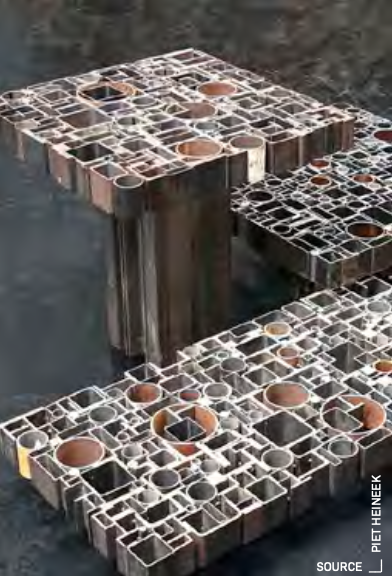
Quotes from the most diverse cultures of the real and virtual worlds are uninhibitedly mixed and tested
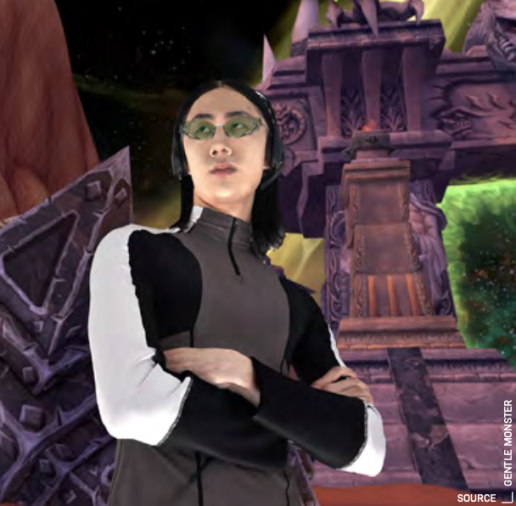
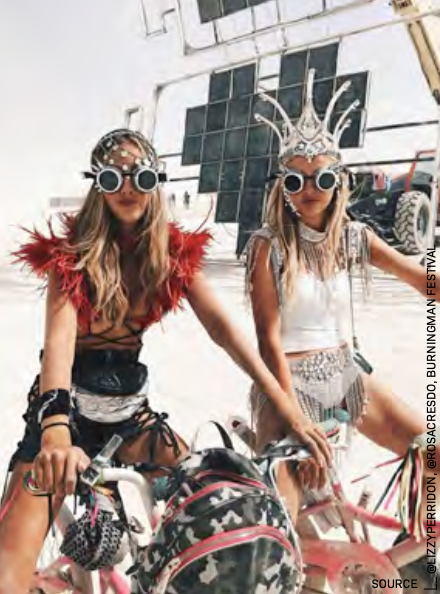
Which colours are of highest importance?
Apparently deep aubergine, dark indigo, earthy browns and blacks root us deeply into our homeland. Warm reds and oranges in the matte brilliance of natural pigments are also added to the palette. Urban accents are included with shining sand and cooper tones. Black is a flexible base colour – either washed out or in True black.
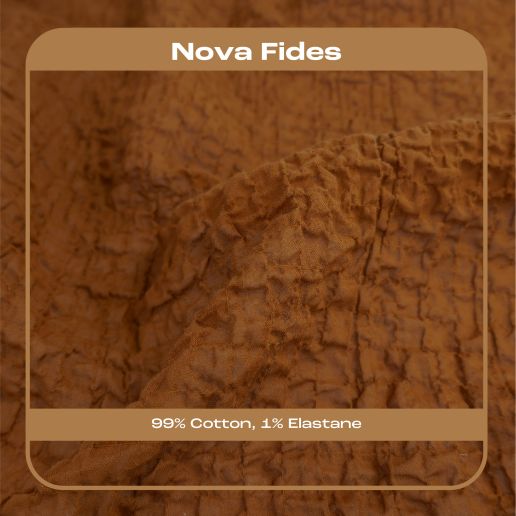
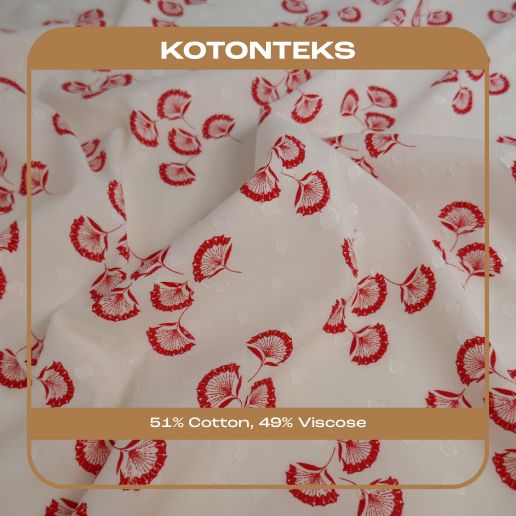
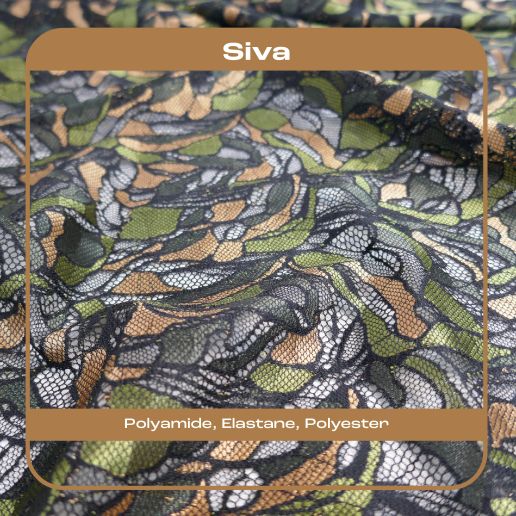
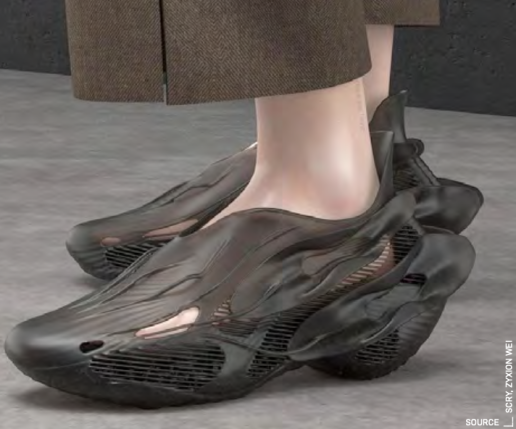
Bold fashion pioneers dive into phygital depths and bring back a style souvenir or two from there. Quotes from the most diverse cultures of the real and virtual worlds are uninhibitedly mixed and tested.
Prints, patterns & connection with nature
WILD.WIDE.WORLD theme is all about ritual motifs from healing and bonding ceremonies – and POWER. Animal prints reappear here like a mirage in a desert, offering an abstract alternative to pre-seasons in an artistic hand-painted style. Interwoven interpretations of patchwork in restrained colours underline the handcrafted character of the theme, while marbled and mineral prints confirm the connection to nature.
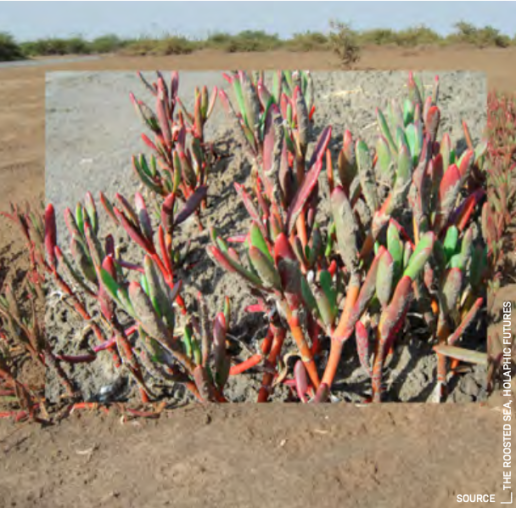
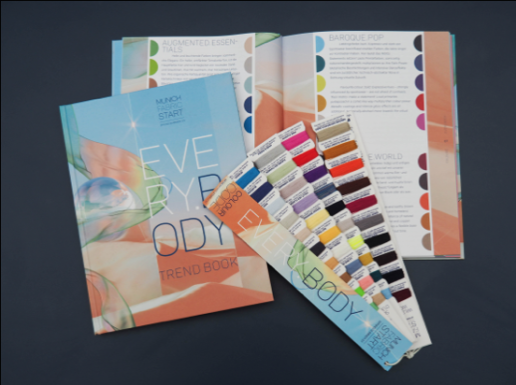
SPRING.SUMMER 23 TREND FORECAST
Last chance: SS 23 Trend Book & Colour Code – the optimal source of inspiration and information for your collection development.
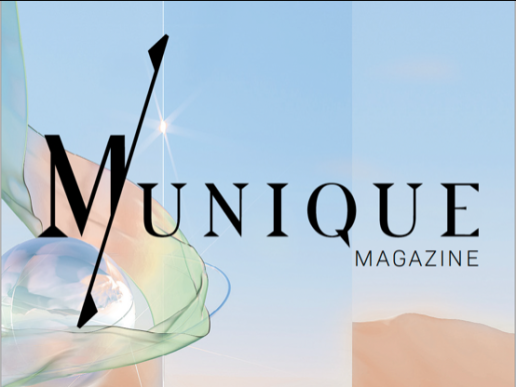
READ MUNIQUE E-MAGAZINE ONLINE
The magazine offers insights with interviews, guest articles and innovative material from our international exhibitors.
EVERY.BODY SS23 Trend #3 - BAROQUE.POP
BAROQUE.POP
the maximalist mood of this trend theme needs expressive fabrics
We are happy to present you the Spring.Summer 23 trend themes included in our MUNICH FABRIC START Trend Book. We hope the themes will give you the impression of what the next season will bring and that they will inspire you and spark new ideas for your future collections’ development.
BAROQUE.POP is the third trend theme included in our Spring.Summer 23 Trend Books. The maximalist mood of BAROQUE.POP needs expressive fabrics with extraordinary surfaces and rich decorations to shine. Without a doubt, this theme is best shown in unique surfaces – technical materials like sporty mesh fabrics or highly elastic stretch are at its core. Full of juxtapositions, BAROQUE.POP is responsible for releasing unlimited amounts of expressive energy.
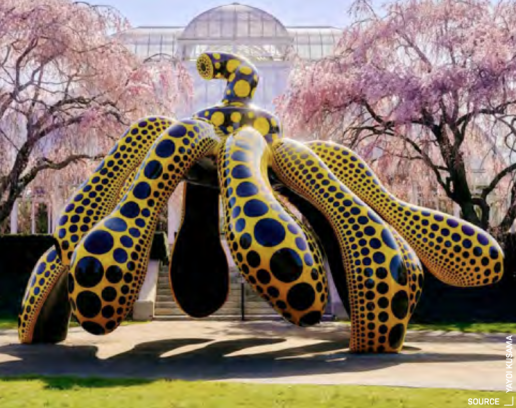
Bold colours and otherworldly reflections – real and virtual – lure us onto the festival playground in this extroverted theme…
TURN UP THE VOLUME !
BAROQUE.POP is pretty much about celebration. The desire to celebrate concludes with expressively beaming colours – heavily influenced by the sportswear aesthetics. The motto of strong colour combinations is: Don’t be afraid of contrasts! Make statements! In juxtaposition, primary colours multiply their power. When used as solid tones – they reveal the spirit of expressive energy. Metallic coatings and the use of intensive gloss effects is definitely a move towards the virtual future…
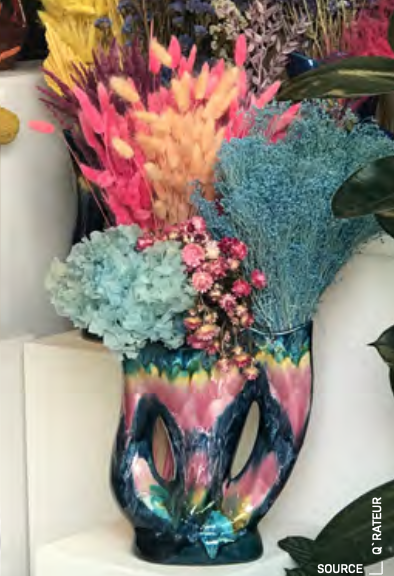
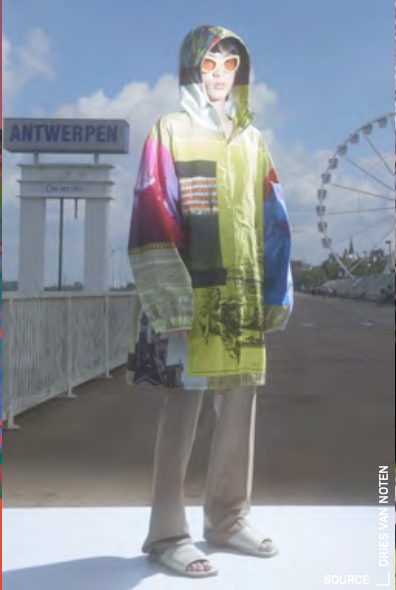
Inspired by fantasy creatures of the techno era and gaming, patterns pop up as hip graphics.
3-D effects, sometimes visual, sometimes haptic additionally activate prints and patterns…
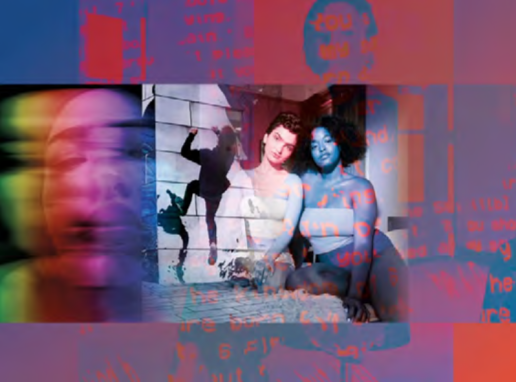
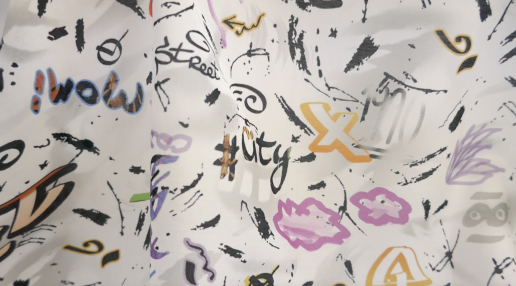
MORE IS MORE.
The details of BAROQUE.POP follow a simple formula – MORE IS MORE. From futuristic trimmings, accessories, prints or through styling itself. Prints and colours are courageously and playfully layered. The playful aspect of this trend theme is shown in an almost childlike joy of combining such different elements together. Overcoming the conventional idea of beauty is the stylistic goal of the BAROQUE.POP trend theme. Combining crew socks in pool slides with bucket hats over hoods are the beginning of new aesthetics.
Fabrics glitter, sparkle and shine but always with the reassurance that sequins and coatings are sustainable. Even at the peak of exhilaration, BAROQUE.POP remains focused on sustainability, new technologies and provocative designs.
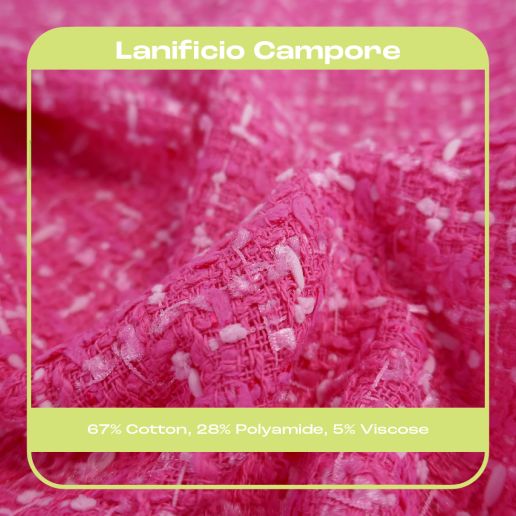
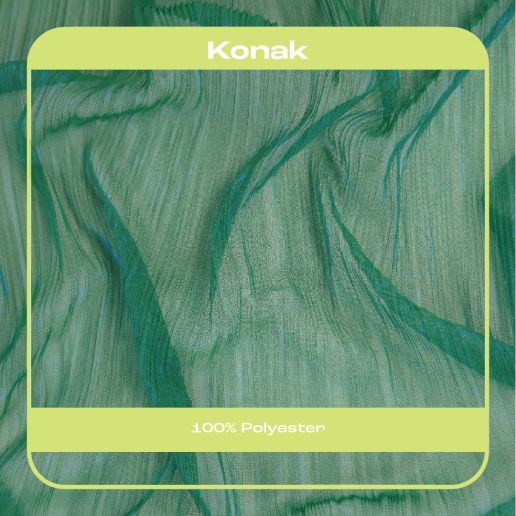
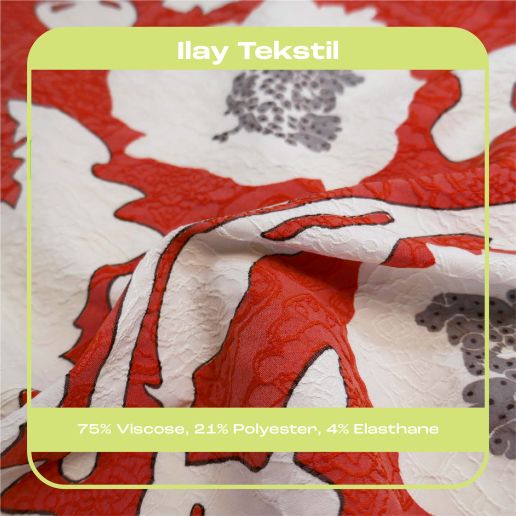

SPRING.SUMMER 23 TREND FORECAST
Last chance: SS 23 Trend Book & Colour Code – the optimal source of inspiration and information for your collection development.

READ MUNIQUE E-MAGAZINE ONLINE
The magazine offers insights with interviews, guest articles and innovative material from our international exhibitors.
FOLLOW US ON INSTAGRAM
We are currently showcasing textiles that fit perfectly into TREND THEMES. Visit our account and find inspiration.
For more news about trends check out the following articles:
Get your Spring.Summer 23 Trend Forecast now
SS 2022 Material Highlights: Floral Impressions
SS 2022 Material Highlights: Black and White


